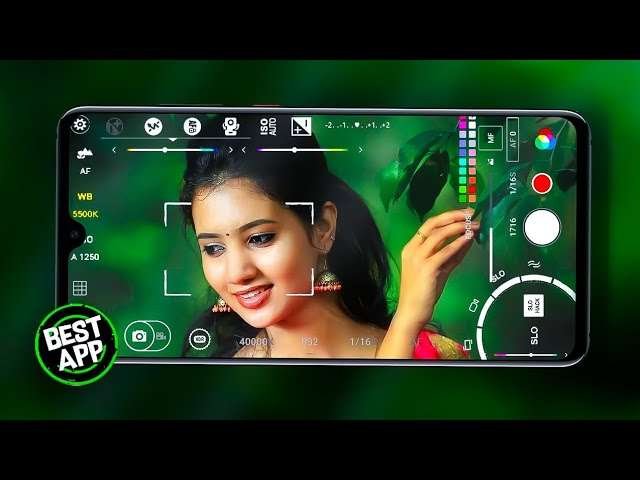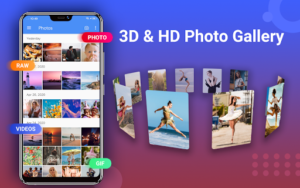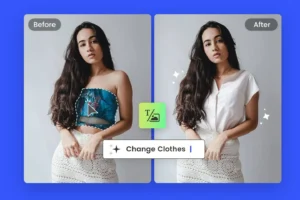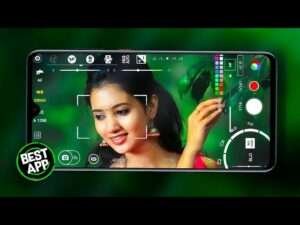Mobile phone cameras have evolved significantly over the years, offering features that closely resemble DSLR capabilities. With advanced sensors and AI processing, modern smartphones now deliver exceptional image quality. From dynamic range to low-light performance, mobiles have made professional-grade photography more accessible. The convenience of having a powerful camera in your pocket is unmatched. This evolution has changed the way people capture memories daily.
Smartphones now come equipped with multiple lenses, such as wide-angle, ultra-wide, and telephoto. These lens combinations allow users to experiment with various photography styles without needing external equipment. Portrait photography has especially benefited, with background blur and subject separation mimicking DSLR bokeh effects. Computational photography also plays a big role in enhancing the final image. It enables smartphones to process photos intelligently and improve details automatically.
The use of AI in mobile photography has significantly improved results for casual and professional users alike. Features like scene recognition, auto-enhancement, and real-time filters make it easy to capture high-quality images. Night mode has become a major strength of smartphone cameras, offering bright and clear photos even in dark environments. These tools have reduced the need for manual adjustments. Anyone can take impressive photos with just a few taps.
Modern smartphones also support high-resolution image capture, sometimes up to 200 megapixels. This level of detail allows users to crop photos extensively without losing quality. With built-in editing tools, users can fine-tune images directly on the device. This eliminates the need for transferring files to a computer for processing. The overall workflow is simplified and faster. Photography is now more efficient and mobile than ever.
Smartphone brands constantly compete to improve their camera systems, leading to rapid innovation. Each new model brings better image processing, improved sensors, and advanced optics. These improvements are often influenced by user feedback and professional reviews. The result is a user-friendly experience that doesn't compromise on quality. People now rely on their phones for everything from casual shots to social media content creation.
Video recording has also seen huge improvements in smartphones. Many models support 4K and even 8K resolution with high frame rates. Features like optical image stabilization and cinematic modes add a professional touch. This makes mobile devices suitable not just for photography but also for filmmaking. The line between phones and traditional cameras continues to blur. Even creators and influencers now shoot entire projects using smartphones.
In terms of portability, smartphones offer a major advantage over DSLRs. Carrying heavy camera gear is no longer necessary for most situations. Whether it's travel photography or spontaneous street shots, mobile phones are ready instantly. This convenience allows users to capture moments that might otherwise be missed. Being lightweight and pocketable, they are ideal for everyday use. Spontaneity is preserved without compromising quality.
Software updates also enhance smartphone camera performance over time. Companies roll out new features through firmware improvements, sometimes boosting capabilities post-purchase. These updates often bring better processing and new shooting modes. Users benefit from these changes without having to buy new hardware. It's a sustainable approach to tech advancement. The camera grows smarter with use and time.
Despite their compact size, mobile cameras manage to include powerful hardware like image processors and advanced sensors. Some phones use large sensors that rival entry-level DSLRs in performance. Coupled with AI, these sensors can deliver stunning detail and color accuracy. Image quality is further boosted by HDR, which balances shadows and highlights. The result is vibrant and natural-looking photos across various scenes.
As technology continues to evolve, the gap between mobile photography and DSLR performance keeps shrinking. For many, a high-end smartphone is now a complete photography solution. It combines powerful hardware, intelligent software, and user-friendly design in one device. The future of photography may very well be in our hands—literally. With smartphones, creativity has no limits and no boundaries.
Smartphone manufacturers are now collaborating with camera brands to fine-tune image quality. Partnerships with companies like Leica, Zeiss, and Hasselblad bring professional color science into mobile photography. This adds a premium touch to photos captured on phones. Users experience better skin tones, depth, and clarity. These collaborations raise mobile photography standards even higher.
Another advantage of mobile cameras is the seamless integration with social media platforms. Photos and videos can be edited and uploaded within seconds. Built-in apps offer instant filters and AI enhancements tailored for platforms like Instagram and TikTok. This makes smartphones ideal tools for content creators. The connection between capture and sharing has never been easier.
Some smartphones even support RAW photography, allowing users to have full control over editing. This feature is essential for professionals who prefer detailed post-processing. RAW files preserve all image data, enabling precise adjustments in color and exposure. Such capabilities make phones suitable for commercial and creative work. They’re more than just point-and-shoot devices now.
Lens quality in smartphones has also improved, with higher-grade materials reducing distortion and chromatic aberration. As a result, sharpness and clarity are maintained across the frame. This level of quality was once limited to DSLRs with expensive lenses. Now it's becoming a standard in flagship mobile devices. The attention to optical engineering continues to grow.
Battery life and thermal management have also improved to support extended photo and video sessions. Phones can now handle long shoots without overheating or shutting down. Some models even include dedicated camera chips to reduce power consumption. This makes smartphones more reliable in demanding conditions. Mobile photography is becoming more professional with every generation.
The use of periscope-style telephoto lenses allows for impressive zoom capabilities without image loss. Optical zoom has reached up to 10x in some models, with hybrid and digital zoom going even further. This opens up new possibilities for wildlife, sports, and event photography. These features are integrated without increasing phone size drastically. Compact power is now a reality.
Augmented reality and AI enhancements are pushing creativity even further. Users can apply live effects, 3D filters, and depth simulations in real time. These tools help express artistic vision without needing external software. Fun meets functionality in a highly accessible format. Photography becomes an experience, not just a result.
Many photographers are now using mobile phones as their secondary or even primary cameras. The quality is sufficient for prints, exhibitions, and publications in many cases. With the right skills and settings, smartphone photography can rival traditional gear. The shift is being recognized across the industry. A new era of visual storytelling is emerging.
The affordability and availability of smartphones make quality photography more democratic. People from all walks of life can learn and explore photography without investing in bulky, expensive gear. This accessibility fuels passion, learning, and innovation. Talented creators are emerging from everywhere. Technology is now truly in everyone’s hands.
Sensor size in smartphones is steadily increasing, bringing in more light and enhancing image depth. This improvement boosts overall photo quality, especially in challenging lighting. With larger sensors, smartphones can now achieve better focus and sharpness. This mirrors what DSLRs have offered for years. The difference is now closing fast in real-world use.
Smartphone camera software also learns from user habits to suggest the best settings. Whether it’s switching to night mode or adjusting exposure, AI provides timely prompts. This not only improves results but also helps users understand photography better. Over time, people become more confident photographers. Learning and capturing happen side by side.
Front-facing cameras have also seen major improvements, catering to the demand for high-quality selfies and video calls. With features like portrait mode and beauty filters, they offer impressive results. The front camera is now powerful enough for vlogging and streaming. Quality is maintained across all lenses. Both sides of the phone deliver great performance.
Storage capacities in smartphones are rising to match high-resolution photo and video needs. Large image files and 4K/8K video require more space, and devices are now built to handle that. Cloud integration also allows seamless backup and access. This ensures safety and convenience for all your work. Storage is no longer a limitation for creativity.
The user interface of camera apps is being designed with ease and efficiency in mind. Settings are accessible, manual controls are intuitive, and presets help even beginners capture professional shots. Whether you're shooting in auto or pro mode, the experience feels natural. The camera adapts to your level of expertise. It’s made for everyone.
Macro photography on smartphones has unlocked an entirely new world for users. Close-up shots of insects, textures, and plants are now possible without extra lenses. Details that were once invisible to the eye are now within reach. These capabilities inspire curiosity and creativity. It’s like carrying a magnifying glass with a lens.
Many smartphones now include dedicated camera modes like astrophotography, slow-motion, and super steady video. These features were once exclusive to high-end cameras or editing software. Now, they’re available instantly through simple taps. Complex shots are easier than ever to create. Creativity is supported by tools that once needed expertise.
Stabilization has reached professional standards with features like sensor-shift OIS and EIS. Whether you’re walking, running, or in a moving vehicle, footage stays smooth. This benefits both video creators and casual users capturing everyday moments. The camera keeps up with life’s movement. Motion no longer means blur.
The gap between beginner and professional is now filled by the smartphone. It allows beginners to start exploring while giving professionals tools they can trust. This balance is rare in tech but smartphones manage to offer it. Whether you’re shooting a family photo or a short film, the results hold up. It’s a truly versatile device.
In the end, mobile cameras are not just catching up with DSLRs—they’re shaping the future of photography itself. What once required heavy gear and experience can now be done with a small device in your hand. The limits of what a phone camera can do are being pushed every year. Passion, paired with technology, creates something powerful. The camera in your pocket is now a gateway to endless possibilities.
Mobile cameras now support real-time HDR video, capturing rich highlights and shadows even in motion. This allows creators to produce cinematic content without needing post-editing tools. Colors stay balanced, and exposure remains consistent across frames. Even fast-moving scenes look natural and polished. The phone handles all the complexity behind the scenes.
Edge detection and depth mapping have improved dramatically in portrait photography. Subjects appear sharper, and backgrounds blur more naturally like DSLR bokeh. This is made possible through advanced AI models trained on thousands of images. Even stray hair or transparent objects are handled with surprising accuracy. Photos look polished without needing extra editing.
The rise of foldable phones is also changing how mobile photography is experienced. With flexible designs, users can take hands-free selfies, unique angles, or dual-screen previews. These new forms factor into creative shooting styles. It’s no longer just about the camera sensor, but also about how you use the device. Form and function are blending in new ways.
Some smartphones now include camera features tailored for vloggers, like directional microphones and subject tracking. These tools help in capturing both clear visuals and clean audio. The experience of using a phone as a complete content studio is becoming normal. It empowers people to share stories instantly. Mobile devices are now storytelling machines.
Third-party app support extends smartphone camera functionality even further. Apps allow full manual control, cinematic LUTs, or advanced bracketing for HDR photography. These tools turn your phone into a creative playground. Users can shoot in formats that rival pro-grade cameras. Flexibility is now in the hands of the user, not locked behind hardware.
Security and privacy are also improving with on-device image processing. Photos are edited and stored without needing cloud uploads, protecting user data. This is especially important for professional or sensitive work. You get high-quality output without compromising safety. Technology is becoming smarter and more responsible.
Augmented reality is adding another layer to mobile photography. Real-time overlays, 3D filters, and interactive elements are now part of the shooting process. This fusion of virtual and real creates new kinds of visual art. What once needed a computer and software can now happen instantly. Creativity becomes both fun and futuristic.
Accessibility features are also being added to help everyone enjoy mobile photography. Voice guidance, haptic feedback, and AI suggestions assist users with visual or motor limitations. This makes photography more inclusive and empowering. No one is left out of the experience. Technology adapts to people, not the other way around.
The environmental impact is also being considered as smartphones replace multiple gadgets. A single phone now takes the place of a camera, editor, laptop, and storage drive. This reduces electronic waste and encourages minimalism. Fewer devices mean fewer resources used. Photography can now be both efficient and eco-conscious.
Smartphones are no longer just alternatives to DSLRs—they are leaders in certain areas. Their speed, connectivity, and intelligent features give them unique advantages. While DSLRs still serve specific professional needs, the everyday creator finds more freedom in a phone. The balance of power has shifted. And the future looks more mobile than ever.








